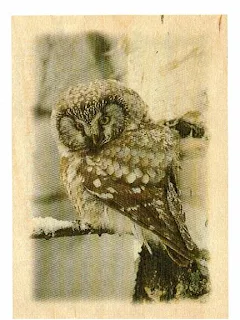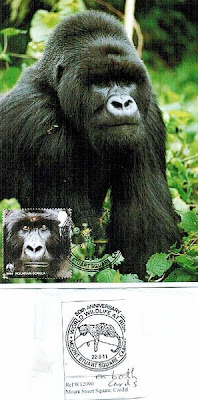"The Brown Pelican (Pelecanus occidentalis) is the smallest of the eight species of pelican, although it is a large bird in nearly every other regard."
"The Virgin Islands, often called the British Virgin Islands (BVI), is a British overseas territory, located in the Caribbean to the east of Puerto Rico. The islands make up part of the Virgin Islands archipelago, the remaining islands constituting the U.S. Virgin Islands. British Virgin Islands government publications had traditionally continued to commence with "The Territory of the Virgin Islands", but recently, more legislation now simply refers to the Territory as the "British Virgin Islands". [note 1][citation needed]
The British Virgin Islands consist of the main islands of Tortola, Virgin Gorda, Anegada and Jost Van
Dyke, along with over fifty other smaller islands and cays. Approximately fifteen of the islands are inhabited. The capital, Road Town, is situated on Tortola, the largest island which is approximately 20 km (12 mi) long and 5 km (3 mi) wide. The islands have a total population of about 22,000, of whom approximately 18,000 live on Tortola."
"The first European sighting of the Virgin Islands was by Christopher Columbus in 1493 on his second voyage to the Americas.
Columbus gave them the fanciful name Santa Ursula y las Once Mil Vírgenes.. (Saint Ursula and her 11,000 Virgins), shortened to Las Vírgenes (The Virgins), after the legend of Saint Ursula."
http://en.wikipedia.org/wiki/British_Virgin_Islands
"
Saint Ursula ("little female bear" in Latin) is a
British Christian saint."
She wanted
CONAN as her
HON[EY]. Instead, she got a
HUN [executioner].
"Her legend,
probably unhistorical,[2][3] is that she was a Romano-British princess who, at the request of her father King Donaut of Dumnonia in south-west England, set sail to join her future husband, the pagan Governor
Conan Meriadoc of Armorica (Brittany), along with 11,000 virginal handmaidens. However, a miraculous storm brought them over the sea in a single day to a Gaulish port, where Ursula declared that before her marriage she would undertake a pan-European pilgrimage. She headed for Rome, with her followers, and persuaded the Pope, Cyriacus (unknown in the pontifical records), and Sulpicius, Bishop of Ravenna, to join them. After setting out for Cologne, which was being
besieged by Huns, all the virgins were beheaded in a dreadful massacre. The Huns' leader shot Ursula dead,
supposedly in 383 (the date varies)."
UNDECIMILLA
"While there was a tradition of virgin martyrs in Cologne by the 5th century, this was limited to a small number between two and eleven according to different sources. The 11,000 were first mentioned in the 9th century; suggestions as to where this came from have included reading the name "Undecimillia" or "Ximillia" as a number, or reading the abbreviation "XI. M. V." as eleven thousand (in Roman numerals) virgins rather than eleven martyred virgins. One scholar has written that in the eighth century, the relics of virgin martyrs were found, among which were included those of a girl named Ursula, who was eleven years old-–in Latin, undecimilia. Undecimilia was subsequently misread or misinterpreted as undicimila (11,000), thus producing the legend of the 11,000 virgins.[8] Another theory is that there was only one virgin martyr, named Undecimilla, “which by some blundering monk was changed into eleven thousand.”[9]"
http://en.wikipedia.org/wiki/Saint_Ursula
"Portuguese explorer João Álvares Fagundes in 1521 named 'Eleven Thousand Virgins' what is now known as Saint-Pierre and Miquelon."
""72 Virgins"
The concept of 72 virgins in Islam refers to an aspect of paradise. In a collection by Imam at-Tirmidhi in his "Sunan" (Volume IV, Chapters on "The Features of Heaven as described by the Messenger of Allah", chapter 21: "About the Smallest Reward for the People of Heaven", hadith 2687) and also quoted by Ibn Kathir in his Tafsir (Qur'anic Commentary) of Surah Qur'an 55:72, it is stated that:
"It was mentioned by Daraj Ibn Abi Hatim, that Abu al-Haytham 'Adullah Ibn Wahb narrated from Abu Sa'id al-Khudhri, who heard Muhammad saying, 'The smallest reward for the people of Heaven is an abode where there are eighty thousand servants and seventy-two houri, over which stands a dome decorated with pearls, aquamarine and ruby, as wide as the distance from al-Jabiyyah to San'a.[63]
[edit] Views
Margaret Nydell states that mainstream Muslims regard this belief about 72 virgins in the same way that mainstream Christians regard the belief that after death they will be issued with wings and a harp, and walk on clouds.[64]"
Another interpretation of the relevant passages of the Qur'an is The Syro-Aramaic Reading Of The Qur'an written by Christoph Luxenberg. In respect of this particular point, Luxenberg argues that the relevant passage actually translates to a portrayal of paradise as a lush garden with pooling water and trees with rare fruit, including white raisins (considered to be delicacies at the time that the Qur'an was written), not virgin maidens.[65][66]
Regarding the above statement, Hafiz Salahuddin Yusuf has said: "The narration, which claims that everyone would have seventy-two wives has a weak chain of narrators." [47]"
http://en.wikipedia.org/wiki/72_virgins
Some would say to Hafiz: YOU ARE the weakest link!
=======
Her name is Andress, not...Undress:
http://en.wikipedia.org/wiki/Ursula_Andress














































.jpg)


.png)




















